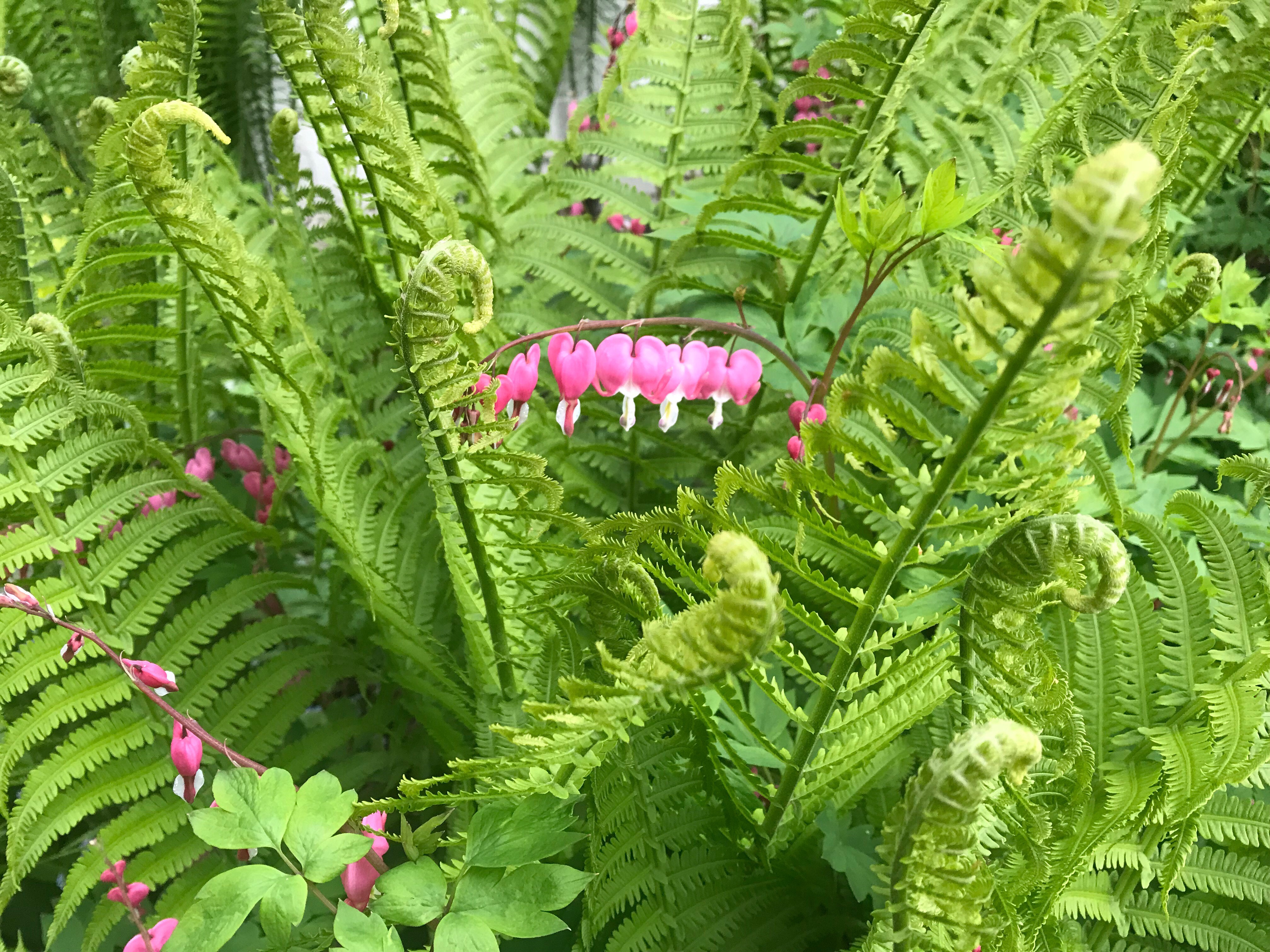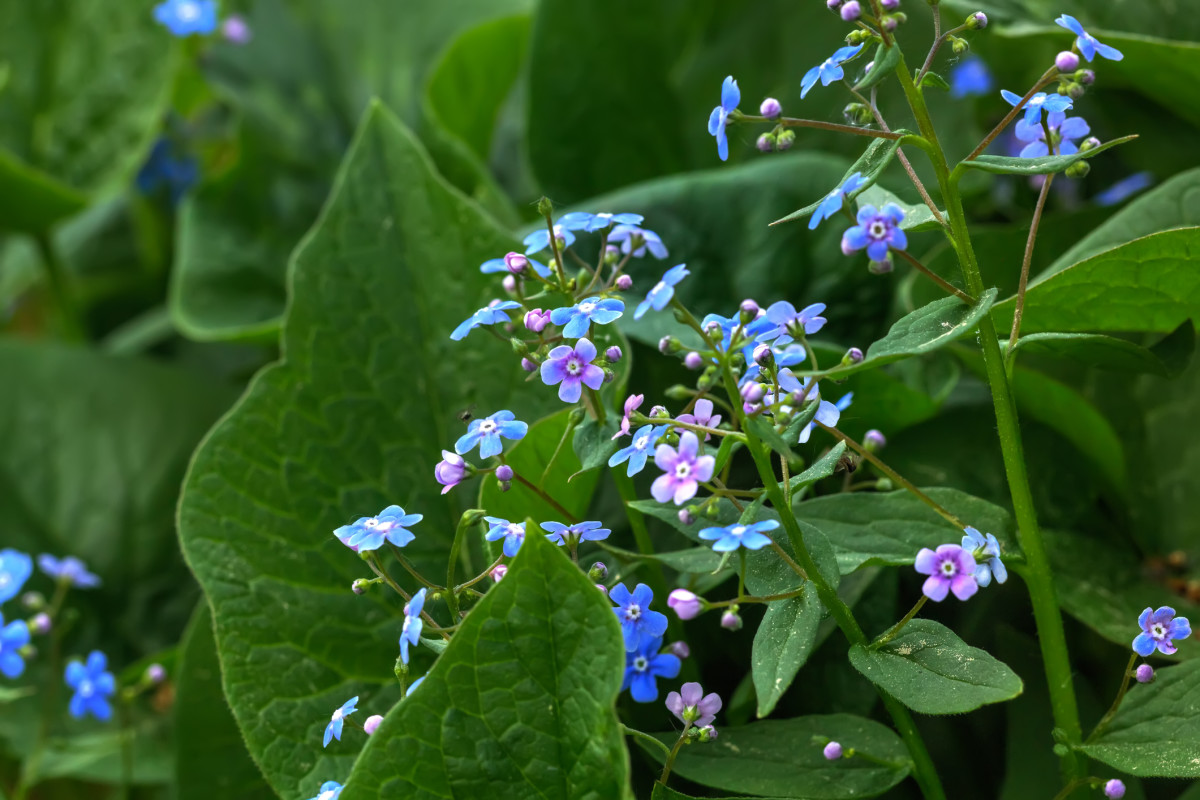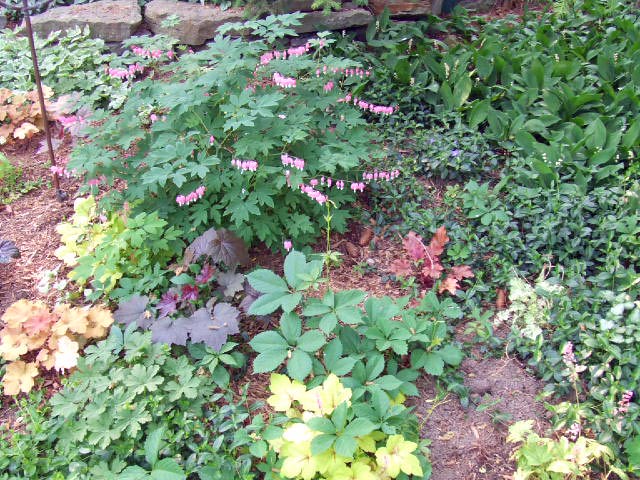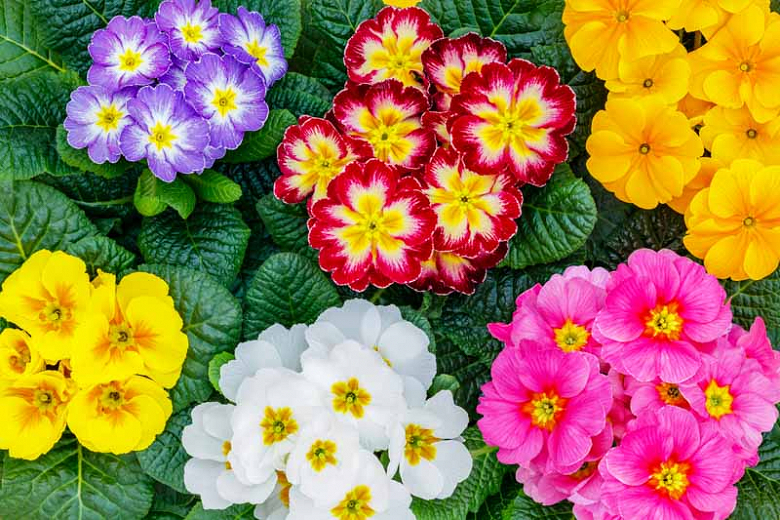Best Companion Plants For Bleeding Hearts
Best Companion Plants for Bleeding Hearts
Bleeding hearts (Dicentra) are beautiful perennials that add a touch of elegance to any garden. Their delicate, heart-shaped flowers bloom in shades of pink, white, and purple in the spring. However, bleeding hearts can be short-lived, and their foliage may not be as attractive in the summer. That's why it's important to choose the right companion plants to help fill in the gaps and create a more visually appealing garden.
Here are some of the best companion plants for bleeding hearts:
- Hostas are a classic companion plant for bleeding hearts. They have large, lobed leaves that provide a lush backdrop for the delicate flowers. Hostas also prefer the same type of soil and conditions as bleeding hearts, making them a natural choice for companion planting.

- Ferns are another good choice for companion plants for bleeding hearts. They add a touch of elegance and texture to the garden, and their foliage can help to hide the bleeding hearts' fading foliage in the summer.

- Astilbes are tall, airy perennials that bloom in shades of pink, white, and purple in the summer. They make a good companion plant for bleeding hearts because they can help to fill in the space left by the bleeding hearts' foliage as it dies back.
- Brunnera macrophylla (Siberian bugloss) is a hardy perennial that blooms in shades of blue in the spring. It has attractive, blue-green foliage that remains attractive all summer long. Brunnera macrophylla makes a good companion plant for bleeding hearts because it blooms at the same time and has similar growing requirements.

- Coral bells (Heuchera) are colorful perennials that come in a variety of shades, including red, orange, pink, and purple. They have attractive, lobed leaves that remain attractive all summer long. Coral bells make a good companion plant for bleeding hearts because they have similar growing requirements and can help to fill in the space left by the bleeding hearts' foliage as it dies back.

- Tiarella cordifolia (foamflower) is a low-growing perennial that blooms in shades of white, pink, and purple in the spring. It has attractive, heart-shaped leaves that remain attractive all summer long. Foamflower makes a good companion plant for bleeding hearts because it has similar growing requirements and can help to fill in the space left by the bleeding hearts' foliage as it dies back.

When choosing companion plants for bleeding hearts, it's important to consider the following factors:
- Sunlight: Bleeding hearts prefer partial shade, so choose companion plants that also prefer this type of light.
- Soil: Bleeding hearts prefer moist, well-drained soil. Make sure your companion plants have similar soil requirements.
- Bloom time: Choose companion plants that bloom at the same time as bleeding hearts or later in the season. This will help to ensure that your garden has continuous blooms.
- Height: Consider the height of your bleeding hearts and companion plants when choosing them. You want to create a balanced look in your garden.
With a little planning, you can create a beautiful and harmonious garden with bleeding hearts and their companion plants.
Conclusion
Bleeding hearts are a beautiful and delicate perennial that can add a touch of elegance to any garden. However, they can be short-lived, and their foliage may not be as attractive in the summer. That's why it's important to choose the right companion plants to help fill in the gaps and create a more visually appealing garden.
The companion plants listed above are all good choices for bleeding hearts. They have similar growing requirements and can help to fill in the space left by the bleeding hearts' foliage as it dies back. By choosing the right companion plants, you can create a beautiful and harmonious garden that will bloom all season long.
Bleeding hearts are beautiful perennials that add a touch of elegance to any garden. But did you know that there are some companion plants that can help them thrive?
The right companion plants can help to:
- Hide the bleeding heart's fading foliage in the summer.
- Provide support for the bleeding heart's delicate stems. *Attract pollinators to the bleeding heart's flowers.
Some of the best companion plants for bleeding hearts include:
- Hostas
- Ferns
- Brunnera macrophylla (siberian bugloss)
- Astilbes
- Coral bells (heuchera)
- Foamflowers (tiarella)
- Lungwort (pulmonaria)
- Solomon's seal (Polygonatum)
- Virginia bluebells (Mertensia virginica)
For more information about companion plants for bleeding hearts, please visit Gardenia Inspiration.
FAQ of companion plants for bleeding hearts
1. What are some good companion plants for bleeding hearts?
Bleeding hearts (Dicentra spectabilis) are shade-loving perennials that bloom in the spring with delicate, heart-shaped flowers. They prefer moist, well-drained soil and can be susceptible to pests and diseases. Some good companion plants for bleeding hearts include:
- Hostas: These shade-loving perennials have large, glossy leaves that can help to hide the bleeding heart's foliage after it blooms.
- Ferns: Ferns are another good choice for companion plants for bleeding hearts. They add a touch of elegance to the garden and can help to provide shade and moisture.
- Brunnera macrophylla: Also known as "Jack Frost," this plant has blue flowers and green and white spotted leaves that make it a beautiful companion for bleeding hearts.
- Astilbes: These plants bloom in the summer with tall, plume-like flowers that can help to fill in the space left by the bleeding heart's foliage.
- Coral bells (Heuchera): These plants have colorful leaves that can add interest to the garden all season long. They also prefer moist, well-drained soil, just like bleeding hearts.
2. Why is my bleeding heart not coming up?
There are a few reasons why your bleeding heart might not be coming up. One possibility is that it is not getting enough sunlight. Bleeding hearts prefer partial shade, so if they are planted in full sun, they may not bloom. Another possibility is that the soil is too dry. Bleeding hearts need moist, well-drained soil, so if the soil is too dry, the roots may not be able to get the water they need. Finally, bleeding hearts can be susceptible to pests and diseases. If your plant is not coming up, it may be infected with a pest or disease.
3. How do I keep bleeding hearts blooming?
There are a few things you can do to keep bleeding hearts blooming. First, plant them in partial shade in moist, well-drained soil. Second, fertilize them with a fertilizer that is high in phosphorus in the spring. Finally, deadhead the flowers after they bloom to encourage new growth.
4. What are some common problems with bleeding hearts?
Bleeding hearts can be susceptible to a few common problems, including:
- Aphids: Aphids are small, sap-sucking insects that can cause leaves to wilt and curl. They can be controlled with insecticidal soap or neem oil.
- Leaf spot: Leaf spot is a fungal disease that causes discolored spots on the leaves. It can be controlled with a fungicide.
- Rust: Rust is another fungal disease that causes orange or brown spots on the leaves. It can be controlled with a fungicide.
- Wilt: Wilt is a bacterial disease that can cause the leaves to wilt and the plant to die. There is no cure for wilt, so infected plants should be removed and destroyed.
5. How do I propagate bleeding hearts?
Bleeding hearts can be propagated by division or by seed. To divide bleeding hearts, dig up the plant in the fall or early spring and separate the roots into smaller clumps. Replant the clumps in a new location. To propagate bleeding hearts from seed, sow the seeds in the fall or early spring in a well-drained pot or seed bed. Keep the soil moist until the seeds germinate.
Image of companion plants for bleeding hearts
5 different images of companion plants for bleeding hearts from Pinterest:
- Hostas are a classic companion plant for bleeding hearts. They have similar growing requirements and their large leaves help to shade the bleeding hearts' roots, which can be susceptible to drying out.

- Ferns are another good choice for companion plants for bleeding hearts. They add a delicate touch to the garden and their foliage can help to suppress weeds.

- Astilbe is a shade-loving perennial that blooms in the summer. Its delicate flowers complement the bleeding hearts' blooms and its foliage provides year-round interest.
- Brunnera, also known as Siberian bugloss, is a low-growing perennial with blue flowers that bloom in the spring. Its leaves are a beautiful blue-green color and they provide a nice contrast to the bleeding hearts' foliage.

- Primroses are a group of spring-blooming flowers that come in a variety of colors. They are not as shade-tolerant as some of the other plants on this list, but they can be grown in partial shade.

Post a Comment for " Best Companion Plants For Bleeding Hearts"